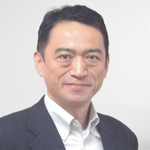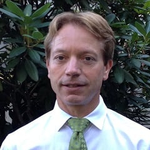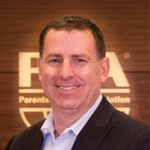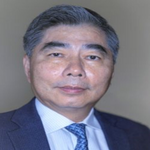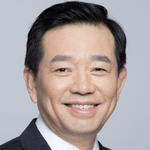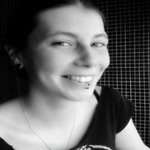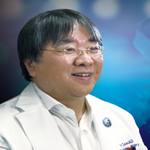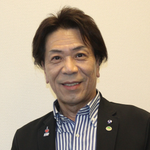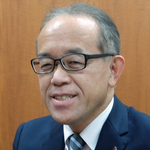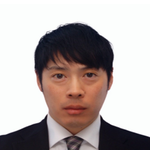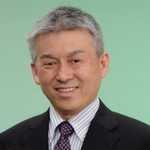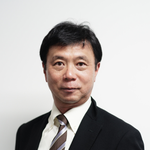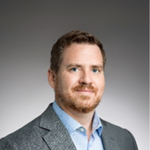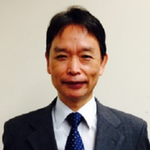- Reception
- Opening Remarks
Yoji Sato - Session 1: Regulatory Updates
- Advanced Analytical Control Strategies for Autologous Cell Therapies and current PDA ATMP Advisory Board Working Group Initiatives (TR 56-2 Annex 2 for ATMPs, ANS-007, RM Qualification, and Other Current Initiatives)
Stephan Krause - Managing Risk in the Aseptic Processing of Cell and Gene Therapies
David TalmageCell and gene therapies have revolutionized the landscape of modern medicine, offering promising treatments for previously difficult diseases. However, the aseptic processing required for the manufacturing of these therapies presents unique challenges due to the high sensitivity of biological products and the stringent regulatory standards that must be met. This presentation explores the critical aspects of managing risk in aseptic processing of cell and gene therapies, focusing on contamination control, facility design, and human behavior.
- Lunch
- Regarding Safety Measures Related to Regenerative Medicine Products 再生医療等製品に係る安全対策について
Yumiko NomuraAccording to the revised law issued in November 2013, the name of the Pharmaceutical Affairs Law was changed to the Act on Ensuring the Quality, Efficacy, and Safety of Pharmaceuticals, Medical Devices, etc., and regenerative medicine products were added as a new category. defined. At the same time, a conditional and time-limited approval system was introduced based on the characteristics of regenerative medicine products, and safety measures were also put in place. Roughly 10 years have passed since the system was revised, and various products are now on the market, with safety measures tailored to the characteristics of each product. We will provide an overview of past efforts and future challenges regarding safety measures for regenerative medicine products.
平成25年11月交付の改正法により、薬事法がその名称を医薬品、医療機器等の品質、有効性及び安全性の確保等に関する法律に改めた上で、再生医療等製品が新たな区分として定義づけられた。同時に再生医療等製品の特性を踏まえて条件期限付き承認制度が導入され、安全確保の対策も整備された。制度改正より概ね10年が経過し、現在では、様々な製品が上市され、それぞれの特性に応じた安全対策措置が図られている。再生医療等製品の安全対策についてこれまでの取組みと今後の課題等について概観する。 - Points to Consider for Reviewing the Quality of Cellular and Tissue-based Products 再生医療等製品の品質審査の留意点
Atsushi NishikawaIn reviewing the quality of products submitted for approval after completing clinical trials, we review product specifications and testing methods, stability considerations and shelf life settings, risk management of exogenous infectious substances, and parameter settings in the manufacturing process. A wide variety of items will be checked, including appropriateness and process validation results. Among these, the appropriateness of product specifications and testing methods, stability studies and shelf life settings, and risk management of exogenous infectious substances are important for quality control of investigational products, not only at the time of approval review but also at the time of clinical trials. This is an important matter that will be reviewed from the perspective of confirming the appropriateness of the In this lecture, we will focus on these issues and discuss the points at issue in the review and the things that developers should keep in mind. In addition, as an example of an actual review, we will introduce review issues and points specific to CAR-T cell products, as autologous CAR-T cell products have been approved in Japan.
臨床試験を終えて承認申請された品目の品質の審査においては、製品の規格及び試験方法、安定性の検討及び有効期間設定、外来性感染性物質のリスク管理の他、製造工程におけるパラメータ設定の適切性やプロセスバリデーションの結果等、多岐にわたる事項が確認されることになる。その中でも、製品の規格及び試験方法、安定性の検討及び有効期間設定、外来性感染性物質のリスク管理の適切性は、承認審査時のみならず、治験実施時においても、治験製品の品質管理の適切性を確認する観点からレビューされることになる重要事項である。本講演ではそれらにフォーカスを当て、審査上の論点・ポイントと開発者が留意すべきと考えられる事項について述べる。また、実際の審査事例として、自己由来のCAR-T細胞製品の本邦における承認品目が集積されたことから、CAR-T細胞製品に特有の審査上の論点・ポイントについても紹介する - Coffee Break
- Promoting Manufacturing Infrastructure for Regenerative/Cell Therapy and Gene Therapy 再生・細胞医療、遺伝子治療の製造基盤の推進
Rena KouderaThe advancement of manufacturing technologies such as cell culture, processing, and purification is said to be the key to the development of regeneration, cell therapy, and gene therapy. We will build a foundation for cell-related manufacturing technology in Japan through the promotion of industries such as venture companies and CDMOs, and the development of elemental technologies. 細胞の培養・加工・精製等の製造技術の高度化は、再生・細胞医療、遺伝子治療の開発の鍵とも言われる。ベンチャー企業、CDMO等の産業推進及び要素技術の開発を通じて、我が国に細胞関連製造技術の基盤を構築する。
- Comparability Considerations for Cellular and Gene Therapy Products 細胞治療製品と遺伝子治療製品の比較検討事項
Andrew ChangCell and gene therapy (CGT) products comprise a rapidly growing field of innovative medicines that hold the promise to treat and, in some cases, cure diseases that are otherwise untreatable. Comparability assessments are crucial for effective life cycle management of all biological products from the early stages of development through commercialization and post-approval, and can be particularly important for CGT products. This presentation will focus on considerations for evaluating the comparability of CGT products before and after changes are made in their manufacturing processes, and to highlight the unique challenges posed by this new class of medicines when assessing their comparability. A few solutions for addressing these challenges are proposed in this presentation. 細胞および遺伝子治療 (CGT) 製品は、他の方法では治療不可能な病気を治療し、場合によっては治癒する可能性がある革新的な医薬品の急速に成長している分野を構成しています。 比較可能性評価は、開発の初期段階から商品化、承認後まで、すべての生物由来製品の効果的なライフサイクル管理にとって極めて重要であり、CGT 製品では特に重要となります。 このプレゼンテーションでは、製造プロセスの変更前後の CGT 製品の比較可能性を評価する際の考慮事項に焦点を当て、比較可能性を評価する際にこの新しいクラスの医薬品によってもたらされる特有の課題に焦点を当てます。 このプレゼンテーションでは、これらの課題に対処するための解決策をいくつか提案します。
- How to be Inspection Ready for CGT Products: An End User Perspective and Case Study CGT 製品の査察準備を迎える準備とは : エンドユーザーの視点とケーススタディ
Peter QiuIn this presentation, Peter will provide an overview of FDA's pre-license inspection program for CGT products including systems covered during an on-site inspection and examples of observations under each system. The presentation will share experience on how to prepare for FDA's inspections for CGT products for CGT manufacturing sites.
- Social Gathering
- Reception
- Session 2: Manufacturing
- Towards Industrialisation of iPSC-derived Allogeneic Cell Therapy iPS細胞由来他家細胞治療の工業化に向けて
Márcia MataKey Words: Stirred tank reactors, iPSC intensification, NK differentiation, Allogeneic, Scalable Induced pluripotent stem cell (iPSC)-derived therapies can serve as “off-the-shelf” allogeneic treatments for a wide range of chronic indications. Exciting early data from clinical trials have recently shown iPSC-derived immunotherapies can be safe and effective. These therapies target large patient populations and can require high doses of ≥109 cells making them unsuited to traditional 2D culture-ware that are typically open and poorly scalable technologies with limited in-process monitoring and increased risk of batch failure. The commercial success of allogeneic iPSC-derived therapies relies on the development of controlled, robust and cost-efficient processing platforms for large-scale manufacture. In parallel, analytical characterisation of such processes is essential for process understanding and to drive quality-by-design development.
Here, I will present examples on how CGT Catapult is working on addressing some of the manufacturing challenges within the field, towards scalable, automated and controlled processes in order to bring these advanced therapies to patients in a cost-effective manner, with a focus on an iNK exemplar differentiation process. キーワード: 撹拌タンクリアクター、iPSC 強化、NK 分化、同種異系、スケーラブル 人工多能性幹細胞 (iPSC) 由来の治療法は、幅広い慢性疾患に対する「既製の」同種異系治療法として役立ちます。 最近、臨床試験からの興味深い初期データにより、iPSC 由来の免疫療法が安全で効果的であることが示されました。 これらの治療法は大規模な患者集団を対象としており、109 以上の高用量の細胞を必要とする可能性があるため、プロセス内のモニタリングが限られ、バッチ失敗のリスクが増加する、一般にオープンで拡張性に乏しい技術である従来の 2D 培養器具には適していません。 同種異系 iPSC 由来療法の商業的成功は、大規模製造向けの、制御された堅牢でコスト効率の高い処理プラットフォームの開発にかかっています。 同時に、このようなプロセスの分析的特性評価は、プロセスを理解し、設計による品質開発を推進するために不可欠です。 ここでは、CGT Catapult が、これらの高度な治療法を費用対効果の高い方法で患者に提供するために、拡張性があり、自動化され、制御されたプロセスに向けて、現場の製造上の課題のいくつかにどのように対処しているかについて、iNK の模範的な分化プロセスに焦点を当てて紹介します。 - My Experience and Next Stage of Myocardial Regenerative Medicine 心筋再生医療の開発経験とnext stage
Yoshiki SawaIn the world, an aging society, overcoming incurable diseases is an essential issue in order to extend healthy life expectancy. For this reason, challenges have begun to develop new treatments based on new scientific discoveries, such as regenerative medicine using iPS cells, and we are entering an era of medical innovation where previously uncurable people can be cured.
We have been working on the development of myocardial regeneration therapy for nearly 20 years, conducted preclinical tests using autologous myoblast cells, found that cardiac function was recovered, and no side effects were observed. The world's first patient with DCM who had been waiting for a heart transplant for one year was successfully weaned from LVAS. Since then, clinical research has been carried out on 50 cases, and based on the results,
10 years have passed since the development of myocardial regeneration therapy using iPS cell-derived beating cardiomyocytes, and results such as proof of proof of concept and regulatory science research have been obtained. Finally, we established a high-rate differentiation induction and large-scale culture of therapeutic human cardiomyocyte-like cells pulsating from clinical iPS shipped from Kyoto University CiRA, a method for removing undifferentiated iPS cells, and its regulatory science. Since 2020, an investigator-initiated clinical trial has been conducted at multiple institutions, mainly at Osaka University, and the planned eight cases have been completed, all of which are progressing smoothly. The technology transfer has been completed to Qualypus Co., Ltd., a venture from Osaka University, and the world's first iPS cell-derived myocardial regeneration treatment product is expected to be commercially available.
In Osaka, we have established an international base for future medical care that combines clinical care and research under one roof, which is rare in the world, on Nakanoshima in the center of Osaka. Establish a future medical bridging base and a startup development acceleration base. Furthermore, since there is a hospital in the same building, these improvements can be directly linked to clinical applications. It is expected to develop future medical care, establish a medical industry ecosystem from Osaka Nakanoshima, establish a cutting-edge medical industry in Osaka, and contribute to the revitalization of the Japanese economy.
This section presents case studies of advanced practices of Contamination Control Strategies on the concept in PIC/S GMP Annex 1 and their importance in Annex 2A." "高齢化社会を迎える世界において、健康寿命を延ばすためには、難病の克服が重要な課題となっています。 このため、iPS細胞を用いた再生医療など、新たな科学的発見に基づく新たな治療法の開発への挑戦が始まり、治らなかった人を治せる医療革新の時代を迎えています。
当社は20年近く心筋再生療法の開発に取り組んでおり、自己筋芽細胞を用いた前臨床試験を行ったところ、心機能が回復し、副作用も認められないことが分かりました。 心臓移植を1年間待っていた世界初のDCM患者がLVASからの離脱に成功した。 以来、50症例を対象に臨床研究が行われ、その結果をもとに、
iPS細胞由来の拍動心筋細胞を用いた心筋再生療法の開発から10年が経過し、実証実験やレギュラトリーサイエンス研究などの成果が得られています。 最後に、京都大学CiRAから出荷された臨床用iPS細胞から拍動する治療用ヒト心筋細胞様細胞の高速分化誘導・大量培養法、未分化iPS細胞の除去法とその制御科学を確立しました。 2020年から大阪大学を中心に複数の施設で医師主導治験が実施され、予定されていた8症例が終了し、いずれも順調に進捗している。 大阪大学発ベンチャーであるクオリパス株式会社への技術移転が完了し、世界初のiPS細胞由来心筋再生治療薬の実用化が期待されます。
大阪では、世界でも稀な、臨床と研究が一堂に会する未来の医療を実現する国際拠点を大阪の中心・中之島に開設しました。 未来の医療橋渡し拠点とスタートアップ開発加速拠点を構築する。 さらに、同じ建物内に病院があるため、これらの改善は臨床応用に直結する可能性があります。 未来の医療を発展させ、大阪中之島から医療産業エコシステムを構築し、大阪に最先端の医療産業を確立し、日本経済の活性化に貢献することが期待されています。" - Break
- Points to Consider for the Manufacturing of Cell and Gene Therapies, EU Annex 1, PIC/s Annex 2A incl. Bio-Safety requirements and Automation with Robotic. 細胞および遺伝子治療薬の製造に関して考慮すべき点、EU 付属書 1、PIC/s 付属書 2A (含む) バイオセーフティ要件とロボットによる自動化
Richard DenkIt is expected that at least 10 new cell and gene products will receive approval every year from 2024 onward. This means that commercial production should be planned and prepared in advance. However, there is a lot to consider here. For which regions of the world should production be approved? Should international guidelines such as the EU GMP Annex 1, PIC/s Annex 2 A or others be considered? This has an influence on the manufacturing requirements. Also, what potency the therapy has. Is this classified for a Bio-Safety Level BSL 1 or BSL 2. The issue of cross-contamination during production in multi-purpose facilities and when handling viral vectors for instance. Automation will also play an important role in the future in reducing manufacturing costs and also in terms of sustainability, since with a very high level of automation less space is required and therefore lower manufacturing and monitoring costs. There is a lot to consider.
2024 年以降、毎年少なくとも 10 種類の新しい細胞および遺伝子製品が承認されることが予想されます。 これは、商業生産を事前に計画し、準備する必要があることを意味します。 ただし、ここでは考慮すべきことがたくさんあります。 世界のどの地域で生産を承認すべきですか? EU GMP Annex 1、PIC/s Annex 2 A などの国際ガイドラインを考慮する必要がありますか? これは製造要件に影響します。 また、その治療法にはどのような効力があるのか。 これはバイオセーフティレベル BSL 1 または BSL 2 に分類されますか。多目的施設での生産時やウイルスベクターの取り扱い時などの相互汚染の問題。 自動化は将来、製造コストの削減や持続可能性の観点からも重要な役割を果たします。非常に高度な自動化により、必要なスペースが減り、製造コストと監視コストが削減されるためです。 考慮すべきことはたくさんあります - Lunch Break
- Session 2: Manufacturing
- Advanced Practice Initiatives of PIC/S GMP Annex 1 and 2A in Contamination Control Strategies (CCS) Development 汚染管理戦略(CCS)開発におけるPIC/S GMP Annex 1および2Aの先進的な取り組み
Yasuhito IkematsuThe PIC/S GMP Annex 1 revised in 2022 will become effective in August 2023, and manufacturing facilities of pharmaceuticals and ATMPs will be required to develop and implement a Contamination Control Strategy (CCS). The development of CCS requires a comprehensive approach to organize old technologies and ideas, including the consideration and implementation of new technologies, leading to effective and rational advanced practices in the operation of CCS.
This section presents case studies of advanced practices of Contamination Control Strategies on the concept in PIC/S GMP Annex 1 and their importance in Annex 2A.
2022年に改訂されたPIC/S GMP Annex 1は2023年8月に発効し、医薬品・ATMPの製造施設は汚染管理戦略(CCS)の策定・実施が義務付けられる。CCSの開発には、新技術の検討・導入を含め、旧来の技術や考え方を整理し、CCSの運用における効果的かつ合理的な先進的実践につなげる包括的なアプローチが必要である。
本節では、PIC/S GMP付属書1の概念と付属書2Aにおける重要性に基づき、汚染管理戦略の先進的な実践事例を紹介する。" - When Science Meets Industry: Towards Fully Automated CAR-T Cell Production • From Lab Scale Applications to Integrated Commercial Platforms 科学と産業が出会うとき: 完全自動化された CAR-T 細胞生産に向けて • 研究室規模のアプリケーションから統合商用プラットフォームまで
Kai JanningThe AIDPATH research platform is currently being developed for the automated decentralized production of CAR-T cells in order to produce cell therapeutics more safe and cost-effectively for individual patients in hospitals. The responsible consortium is currently on track for reaching several groundbreaking milestones in the sector of ATMP manufacturing. The big next step is further scale-up and professionalization of such production systems. Fraunhofer IPT will present the current state of the art with regard to AIDPATH as well as the potentials and hurdles for integrated commercial platforms for CAR-T cell production. Also, a development guideline for the transformation from purely manual production to modern automated production according to "Industry 4.0" approaches will be demonstrated.
AIDPATH 研究プラットフォームは現在、病院の個々の患者に対してより安全かつコスト効率よく細胞治療薬を生産するために、CAR-T 細胞の自動分散生産を目的として開発されています。 責任あるコンソーシアムは現在、ATMP 製造分野におけるいくつかの画期的なマイルストーンの達成に向けて順調に進んでいます。 次の大きなステップは、そのような生産システムのさらなるスケールアップと専門化です。 フラウンホーファーIPTは、AIDPATHに関する最新技術と、CAR-T細胞生産のための統合商業プラットフォームの可能性とハードルを紹介します。 また、純粋な手作業による生産から、「インダストリー 4.0」アプローチに従った最新の自動生産への変革のための開発ガイドラインも示されます。 - Introduction of Development Examples of Regenerative Medical Products and Change Management Specific to Autologous Cultured Products 再生医療等製品の開発事例紹介と自家製品特有の変更管理について
Yukio MoriRecently, several CAR-T products have been launched one after another in Japan and their indications have been expanded, and many regenerative medical products (16 products) using living cells are being used to treat patients. When these products are classified by the origin of the raw material cells, the majority are autologous products. Since these autologous products use patient cells as starting materials, the quality of the starting materials differs each time. Therefore, there are issues in process development that are different from those for pharmaceuticals, which require highly reproducible manufacturing from uniform raw materials. Our company (Japan Tissue Engineering Co., Ltd.) has launched multiple autologous regenerative medical products and has accumulated experience in manufacturing many products. In this lecture, within the range of our products, we will introduce the limitations and issues at the development stage that are unique to autologous products, as well as examples of optimization by analyzing production data after approval.
今般、日本においては複数のCAR-T製品が相次いで上市や適応拡大されるなど、生きた細胞を用いた再生医療等製品が数多く(16製品)患者治療に供されている。これらの製品を原料細胞の由来で分類すると、患者自身の細胞を用いた自家製品が多数を占めている。これらの自家製品は、患者細胞を出発原料とすることから出発原料の品質がその都度異なるという、均一原料から再現性の高い製造を行う医薬品とは異なるプロセス開発の課題がある。弊社(株式会社ジャパン・ティッシュエンジニアリング)では、これまでに複数の自家再生医療等製品を上市し、多数の製造を経験を積み上げてきた。本講演では、我々の製品の範囲ではあるが、自家製品に特有の開発段階での制限事項・課題、さらに承認後の生産実績データを解析することにより最適化した事例等について紹介する。 - Coffee Break
- Technology Transfer Knowhow and Process Solution Supporting GMP Production of Cell Therapy 細胞治療薬のGMP製造を支援する技術移転のノウハウとプロセスソリューション
Kenichi TaharaAseptic manufacturing methods are becoming increasingly important in GMP manufacturing of cell and gene therapy products. The introduction of cell processing isolators can be an effective solution for establishing robust aseptic manufacturing. To this end, it is important to establish a manufacturing method using isolators. Isolators serve to minimize contact with the outside world and reduce the risk of cell contamination. However, there are several challenges in transferring manufacturing methods from safety cabinets to isolators. Isolator operators require specific skills and require the establishment of mechanisms related to proficiency and optimization of the workflow within the isolator. In this presentation, we will propose know-how and solutions for the introduction of isolators and the associated technology transfer to solve the issues of sterility, quality, and worker proficiency in cell processing. In addition, the usefulness of isolators will be demonstrated through manufacturing case studies. 細胞治療製品のGMP製造において、無菌製法の重要性がますます高まっています。細胞加工アイソレータの導入は、頑健な無菌製造の構築に有効な解決策となり得ます。そのためには、アイソレータを用いた製造法の確立が重要です。アイソレータは外部との接触を最小限に抑え、細胞の汚染リスクを低減する役割を果たします。しかし、安全キャビネットからアイソレータへの製法移行にはいくつかの課題があります。アイソレータ作業者は特定のスキルを要するため、習熟やアイソレータ内での作業フローの最適化に関する仕組みの構築が必要となります。本講演では、細胞加工における無菌性、品質、作業者の習熟度という課題を解決するために、アイソレータの導入とそれに伴う技術移管のノウハウや解決手段について提案します。また、製造ケーススタディを通じてアイソレータの有用性を示します。
- Concept of QbD Approach in Cell Manufacturing and Initiative toward Process Stabilization 細胞製造におけるQbDアプローチの考え方と工程の安定化に向けた取り組み
Masahiro Kino-okaThe QbD approach is known as an activity leading to the manufacture of pharmaceutical products. The specific findings and standards obtained are compiled into a control strategy, which is then used to establish a high level of quality assurance. The control strategy can be used to establish a high level of quality assurance by using it as a reference or description in GMP controls and approval documents. In cell manufacturing for cell therapy and regenerative medicine, however, it is now known that process fluctuations can cause variations in quality, making it difficult to apply the QbD approach described above, including unique manufacturing process development methodologies. Therefore, it is desired to construct an advanced QbD approach that includes a methodology for the development of unique manufacturing processes. In this presentation, the use of potency assays in CQA and the procedures for determining CPP and DS in manufacturing process development will be introduced as advanced QbD approaches in cell manufacturing. In addition, the method will be proposed to determine the criticality of PPs by considering the control difficulty in the process to facilitate the extraction of CPP and the determination of DS.
医薬品製造にいたる活動としてQbDアプローチが知られており,得られた具体的な知見や基準は管理戦略としてまとめられ,この管理戦略をGMP管理や承認書への参照または記載に用いることで,高度な品質保証を確立することが可能となることから,多くの製造に導入が進められている. 細胞加工製品の製造においては,工程の揺らぎにより,品質のばらつきが生じることが知られており,上述のQbDアプローチを適用することが困難であり,固有の製造工程開発の方法論を含む,新たなQbDアプローチの構築が望まれている. 本講演では、細胞製造における先進的QbDアプローチとして、CQAにおけるポテンシーアッセイの活用、製造プロセス開発におけるCPPおよびDSの決定手順を紹介する。また、プロセスにおける制御の難しさを考慮してPPのクリティカリティを決定し、CPPの抽出とDSの決定を容易にする方法を提案する。 - Summary & Closing Remarks
Richard Denk
The program is subject to change and the organizers reserve the right to modify, update, or amend any details as needed. As we aim to provide the most current information and updates, we encourage you to check regularly for any changes.
